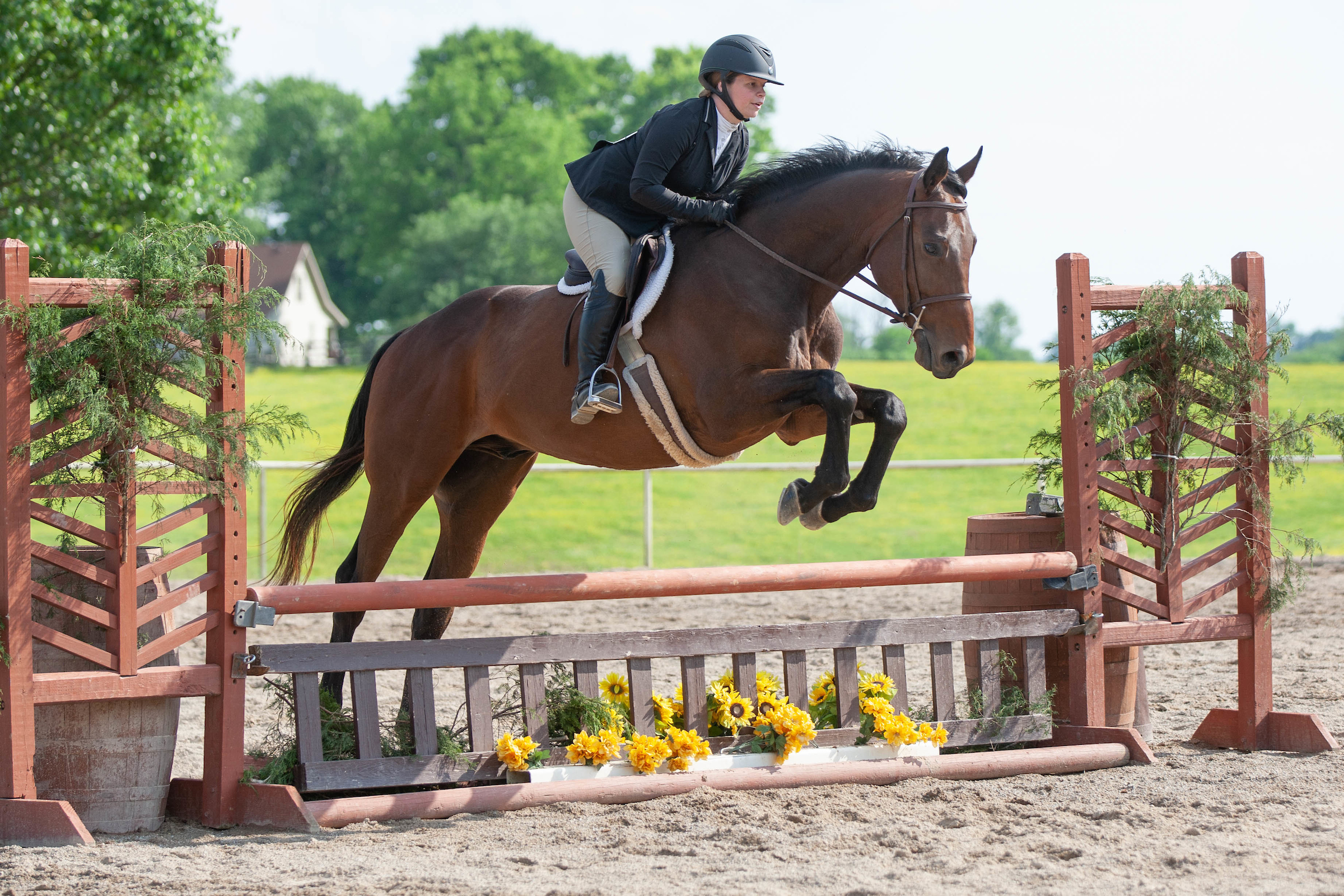
Horse and Rider Advocate Series
USHJA's bimonthly series on horse health and wellness is based on guidance and input from the USHJA Horse and Rider Advocates Committee. This series aims to provide members with information they can use to help keep themselves and their equine partners happy and healthy throughout the year.
Smarter Show Scheduling

1) Age
- Young horses need attention paid to their mental and physical development. Going to a horse show is a big ask! Patiently allow green horses to settle in to new show environments and be mindful of time in schooling rings. Younger horses may not be able to withstand too much wear and tear on their joints and tendons. Too much time on a longe line, high repetitions over fences and increased fence heights can play a large part in premature deterioration of lower limbs.
- Older horses need attention paid to their mental and physical well-being. Countless classes with several lesson riders at a single show takes a toll on the hooves, back, legs and mouth. Too much time in the show ring, schooling area and ringside can sour even the best schoolmaster. Consider limiting one rider to each horse and the number of rounds and classes each day to avoid creating sore and sour horses.
2) Training
- Green horses gain a lot of experience in the ring. Showing builds strength and confidence, in addition to helping create a well-mannered horse that is familiar with the competition environment. Showing too much can also set back your training by exhausting an unfit horse, souring them to the competition ring and potentially causing negative health effects. Work closely with your trainer to balance training needs with the physical and mental need for downtime.
- Seasoned competition horses with years of experience have phenomenal show etiquette. Their winning style attracts the judges, and it can be tempting to compete more often to rack up points and ribbons. Carefully consider the show schedule and choose only the classes that can help further your goals without adding excessive rounds to your horse’s program. Horses with advanced training and experience require fewer trips in the ring, less miles and minimal jumps in the schooling area. Opting out of the warm-up classes is one tip with the potential to make a huge difference. Be mindful of preserving their natural brilliance and love of showing!
3) Classes
- Flat classes and over fences classes put differing amounts of strain on equines. Consider that a single flat class will offer less impact on joints when compared to a single over-fences class. That said, multiple flat rounds may create the same, or more, levels of stress on a horse’s body as one or two over fences classes do.
- Weigh the number of times a horse competes over-fences, the height of the jumps, if there is a work-off or jump-off, number of jumping efforts in each class, the amount of time longeing, and the amount of jumps in the schooling area. Each strains the body at varying degrees, which add up at the end of every day and week.
4) Previous show schedule
- Reflect on the previous year’s competition calendar and consider how your horse looked, felt and performed. Consider making adjustments to your upcoming schedule if your horse came home feeling exhausted, sore or sour.
- Be flexible! If you or your horse have a setback along the way, be sure to allow ample time for healing. This is key for the longevity of your partnership.
- Remember your goals. Working with your trainer, make a plan that helps you achieve those goals without competing more often than necessary. Your horse will thank you for it!

How much showing is too much showing? There is no one answer. Balance your show calendar and classes entered with your goals, while taking into account the horse as an individual.
Without our four-legged partners, we are unable to achieve greatness in the show ring. Help keep your horse sound, healthy and happy by choosing a competition schedule that is both rewarding and sensible for the needs of each individual horse. With so many available competitions, tailoring your show calendar to fit you and your horse’s needs is within reach. Be mindful of breaks between shows to decompress, reflect, and enjoy your partnership—remember, showing should be a balance of work and fun.
|
Photos: Rachel Sowinski/USHJA and Terisé Cole/USHJA |



